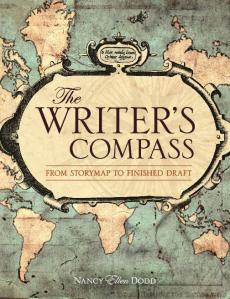Disclaimer: The above link goes to Amazon.com. Other book sellers are listed on the Writer’s Compass tab above. The author may be paid a nominal fee for purchases made through this link.
Many of us have a story or stories to tell. As writers we look for answers to:
- How do I write a whole story out of a single idea?
- How do I turn the pages that gushed out in a single writing session into a complete story?
- When am I telling and not showing?
- What is my story missing?
- Which critiques should I listen to?
- Should I follow my own instincts?
- How do I know what’s working and what’s not working?
- When do I know I’ve edited enough?
- How many drafts does it take to finish a story?
- Can I succeed as a writer?
Most books and instructors can’t answer these questions because the answer lies within you—the writer. The Writer’s Compass (TWC) guides you, to find your own answers by thinking through what you are writing, why you are writing it, and what you want to say—setting the compass for your work. Once you have a compass for your ideas, it is easier to write the story you want to tell, even when you aren’t sure at first what that story might be.
The Introduction explains how TWC is organized and how to use the book to get the most benefit.
Part I, the Beginning, discusses preparing for writing by developing a writing time, space, and mind-set.
The Middle explains story mapping and the 7-Stage process. Charting the key elements of storytelling with your ideas across a story map is like creating an outline or a synopsis, but is easier, more visual, and can be constructed from any point in the story. Each of the 7 Stages addresses an area of storytelling that tends to need more development. Much like constructing a house, the 7 Stages are based on developing the story foundation, then adding the structure, the roof, the walls, the flooring, painting and designer touches, and finally moving in. Each stage adds another level of breadth and depth to the story across the entire story map.
- Stage 1—Forming Stories and Developing Ideas:
- Stage 2—Building Strong Structures
- Stage 3—Creating Vibrant Characters
- Stage 4—Structuring Scenes, Sequences, and Transitions
- Stage 5—Increasing Tension and Adjusting Pacing
- Stage 6—Enriching the Language and Dialogue
- Stage 7—Editing the Hard Copy and Submitting
Stage 1 discusses how ideas are formed and the act of brainstorming. The evolution of writing stories takes many forms and starts at many different points. This stage shows the writer how to use that evolution to an advantage in forming ideas. This process also allows for the different ways writers write.
Stages 2 through 6 focus on the process of story development but also continue to expand ideas. Each of these stages addresses a specific area of development in a system that builds rather than crisscrosses efforts. In other words, when relying on “just reading through” to reveal story weaknesses, the writing process is inefficient and there is a crossover of efforts with multiple passes of the same material. When a story is developed strategically using the 7-Stage process, the writing is stronger and does not have to be revised as many times.
For example, Stage 6 is “Enriching the Language and Dialogue.” If this task occurs before the structure is in place or the characters are developed, the writer may need to rewrite, but is hesitant because the language has already been developed to the writer’s satisfaction, which makes it harder to cut scenes or dialogue that no longer work. By waiting until a later development stage to work on the language, the story is already richer, more developed and closer to completion. Time spent on language at this later stage is far more efficient. Think of a potter focusing on the intricate design around the outside of a pot before shaping the pot. The efforts put into the artwork now become distorted or are ruined.
Stage 7 is the final stage of editing, submitting, and continuing to write. Each of the stages grows progressively shorter, like a pyramid, as more writing of the story is completed and less writing and revision needs to be done.
The End is the shortest section and addresses the importance of setting goals, quality writing, and how to map the writer’s lifestyle.
In future blogs we’ll talk more about creating a story map and the 7 Stages and writing in general.


